Take a deep dive into your own head. Do an archaeological dig. Work your way all the way to the center. What do you find?
Core memories. Foundational impressions. The moments that made you.
Me? Mine are almost all related to creativity:
– Reading books — fairy tales and fantasy, mostly.
– Writing and illustrating my own fantasy stories with crayons, and then learning how to type out the words with my index finger on a typewriter.
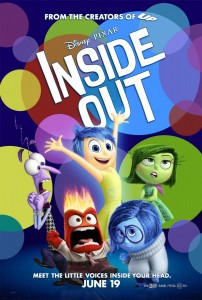 – Drawing pictures on church bulletins during church while my mom softly shushed me.
– Drawing pictures on church bulletins during church while my mom softly shushed me.
– Opening presents on Christmas morning at my grandparents’ house, and discovering that my grandfather has built me my very own puppet stage.
– Hanging out with my dad while he read theology books and graded high school students’ papers all evening.
– Playing basketball in the backyard all by myself, inventing new variations on the game, and pretending to be every player on opposing teams as I acted out whole games.
– Watching Disney’s Snow White and the Seven Dwarfs on the big screen, and The Muppet Show on our temperamental black and white TV.
– Listening to long-playing Disney records based on their animated feature films.
All of these memories have a significant influence on who I am today.
I wasn’t thinking about core memories at the time. I was just experiencing life, making choices, and learning. I wonder how things might have been different if I, at that young age, had understood the tremendous value of the memories I was forming, of how they would shape my life in years to come.
I did, however, think about emotions a lot. I was generally happy, and bursting with creative energy. I don’t remember much sadness. Disgust? I hated lima beans and the ammonia smell of my grandmother’s hair perm chemicals. Anger? My family has always had a way of suppressing anger, so that I have only the faintest traces of memories related to anger, and have never learned very well how to express it.
What would I have thought of Disney/Pixar’s Inside Out if it had opened when I was a kid?
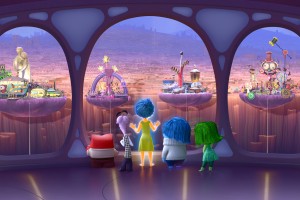 This summer, thanks to director Pete Docter, kids are going to be thinking about core memories and about how those impressions are forged in the furnaces of their minds and hearts. And I guarantee you that many of those kids will feel the magic hands of Disney’s artists holding dramatic influence over their own foundational impressions. Inside Out announces itself as a movie about emotions — and it is — but it’s also about the making of our minds. And the minds that made it are among the wildest imaginations making movies today.
This summer, thanks to director Pete Docter, kids are going to be thinking about core memories and about how those impressions are forged in the furnaces of their minds and hearts. And I guarantee you that many of those kids will feel the magic hands of Disney’s artists holding dramatic influence over their own foundational impressions. Inside Out announces itself as a movie about emotions — and it is — but it’s also about the making of our minds. And the minds that made it are among the wildest imaginations making movies today.
Inside Out tracks a world inside the mind of 11-year-old Riley, who is growing up, trying to cope with fear, sadness, anger, disgust, and joy as her loving family makes a major life change that requires an intense process of change.
To help us navigate this territory, Docter and his team of first-class storytellers have imagined Joy, Sadness, Anger, Fear, and Disgust as characters who run the command center — “Headquarters” (pun intended) — of Riley’s mind. They are the crew of her own personal Starship Enterprise, charting her course through new worlds (like school), seeking out discovery and wonder and excitement (on the hockey rink), helping her process strange new sensations (like… the attention of boys), and taking her where no young girl has gone before.
Inside Out‘s Emotions are a technicolor dream team — luminous, hyper-charged for action, and perfectly voice-cast so that we could slap emotional name tags on them just by the sounds of their voices. And they’re perfectly illustrated so that the youngest viewers can tell them apart, older viewers can appreciate nuances in their characters, and merchandisers can invent innumerable toys bearing their distinct likenesses.
Let’s line ’em up:
1. Joy (voiced ebulliently by Amy Poehler) has the upper hand in Riley’s head. She’s enthusiastic, giddy, and made of a sort of Hostess Twinkie material (in close ups, her edges seem spongey, effervescent, and ephemeral, as if she’s an energy field). She’s a sort of carbonated Tinkerbell inspired by a Coldplay song: She’s all yellow.
2. Anger (Lewis Black) is as short and stout as Roger Ebert’s thumb’s up and red as a bursting blood vessel; expect to see his face used as an emoji for blinding rage.
3. Fear (Bill Hader) is skinny, purple, and bendy as spaghetti al dente — and it’s his job to set off alarms regarding Riley’s safety.
4. Disgust (Mindy Kaling) strives to save Riley from dangerous substances like… broccoli.
And 5. Sadness (Phyllis Smith), a gloomy gumdrop who literally has the blues… well, what good is she? Suppress her! Resist her! Try to lock her up! She’ll still taint memories, she’ll still spoil moods, and eventually she’ll threaten to wreck all of Joy’s endeavors to keep Riley happy.
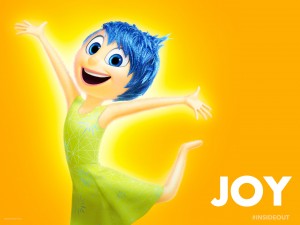 The emotions work together like the best sitcom teams — from The Mary Tyler Moore Show to Seinfeld to 30 Rock — as they move through a glorious wonderland from Headquarters to the vast library of Long Term Memory to the all-important Memory Islands under construction: islands that represent categories of memory that determine Riley’s identity — family, play, imagination, sports, and more. And while you’re on the dizzying bridges from Headquarters to the islands, don’t look down! There are darker and more disturbing realms to be found deep in the canyons of memory. But I’ll let you discover for yourself what’s waiting there, what sleepers might awaken from the shadows. For now I’ll just say this: Remember that fantastic scene in Toy Story 2 when Woody climbs around on a sleeping giant and tries not to wake him? There’s another version of that scene here… and it’s kind of terrifying.
The emotions work together like the best sitcom teams — from The Mary Tyler Moore Show to Seinfeld to 30 Rock — as they move through a glorious wonderland from Headquarters to the vast library of Long Term Memory to the all-important Memory Islands under construction: islands that represent categories of memory that determine Riley’s identity — family, play, imagination, sports, and more. And while you’re on the dizzying bridges from Headquarters to the islands, don’t look down! There are darker and more disturbing realms to be found deep in the canyons of memory. But I’ll let you discover for yourself what’s waiting there, what sleepers might awaken from the shadows. For now I’ll just say this: Remember that fantastic scene in Toy Story 2 when Woody climbs around on a sleeping giant and tries not to wake him? There’s another version of that scene here… and it’s kind of terrifying.
The less you know from this point on, the better. This this — more than any other Pixar movie — is an experience of constant and joyous surprise. Suffice it to say that the hardships Riley suffers end up catapulting Joy and Sadness out of Headquarters, leaving Anger, Disgust, and Fear to rule her roost. Most of the film is concerned with Joy and Sadness learning to get along as they try to make their way back to headquarters while the troubles that separated them in the first place continue to devastate Riley’s psychological cosmos.
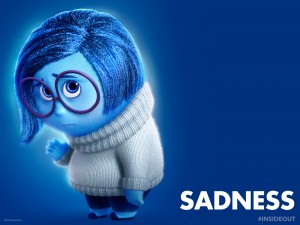 And who hasn’t experienced such things? Director Pete Docter, who proved himself a virtuoso of emotional storytelling when he made Monsters Inc and Up — has found a phenomenal visual vocabulary for helping us understand what happens to so many of us when we find ourselves in situations where we have lost control our circumstances.
And who hasn’t experienced such things? Director Pete Docter, who proved himself a virtuoso of emotional storytelling when he made Monsters Inc and Up — has found a phenomenal visual vocabulary for helping us understand what happens to so many of us when we find ourselves in situations where we have lost control our circumstances.
In fact, every beat of this story rings true, and what’s more — this time, Docter paces the story’s emotional stages so that things intensify brilliantly. We become so swiftly acquainted with the beauty of the landscape of Riley’s mind that we can feel what’s at stake right away. And so we can feel regions of our own minds resonating in empathy for Riley as she suffers various crises. We can sense that her whole future, her passions, her talents, and her loves could all come crumbling down in a matter of moments if she is not surrounded by love and care.
I don’t think I’ve ever seen a film that more powerfully portrays the fierce intelligence, but also the fragility, of a child’s mind for moviegoing audiences. Your mileage may vary, but I was moved to tears within the first 15 minutes — not by sentimentality, but by that rare experience of imagining things I had never thought about before, recognizing them as true, and then realizing the implications for me and for those I love. So many names of friends and family members went through my mind at different points in this journey, as I thought of survivors of emotional abuse, of children dealing with catastrophic loss, of adults still burdened by the lasting effects of childhood trauma.
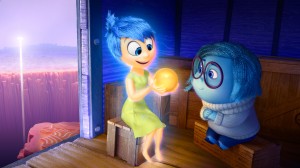 And yet — don’t get me wrong — the overwhelming mode of this movie is joy.
And yet — don’t get me wrong — the overwhelming mode of this movie is joy.
Lest I give the impression that I’m one of those raving Pixar fanboys, I will say this: I would have written the last act of the film a little differently. And I was not surprised to find that my good friend Steven Greydanus, film critic for DecentFilms.com, and I agreed on what storytelling points could have used some strengthening. Let’s just say that they involve the ways in which Riley’s Memory Islands — the fragile “national parks” of her experience geography — prove to be vulnerable to trauma and calamity, and how the film ends up resolving the problems that occur there. That last act resolves very, very quickly when it seems to me that a more patient depiction of the conclusion might have felt more true and persuasive.
But that’s a minor storytelling quibble. Make no mistake: This is another standard-setting achievement for Pixar. Their methods for crafting movies are legendary, but this may be the greatest triumph of their process: The story, according to Pete Docter and his producer Jonas Rivera, went through so many drafts, and so many drastic revisions, that they didn’t even know the basic plot until several years into the project. Now, audiences get to reap the rewards of their courage, their high standards, and their willingness to keep trying. Beyond the story, everything else is perfectly calibrated: the cast, the animation, the sound, Michael Giacchino’s musical score. This is the work of artists in peak form, working collaboratively, with all of their priorities in the right places. It has the cosmic scope of WALL-E, the big beating heart of Up, the indelible personalities of Toy Story, and a storytelling arc as strong as Finding Nemo.
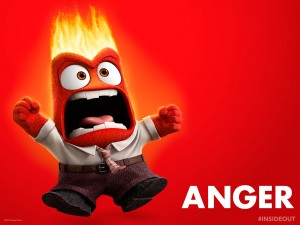 It also has the funniest end-credits surprises of the whole Pixar catalog, so stay in your seat.
It also has the funniest end-credits surprises of the whole Pixar catalog, so stay in your seat.
I can’t help but wonder how the ideas presented in this movie will affect the way children think about their own minds, their own memories, their own emotions. What a strange thing for a child — to begin imagining these forces of emotion and energy as individual identities, a community of little angels running around inside her head trying to hold her together through hardships.
I wouldn’t be surprised if Inside Out becomes the most socially influential work of this studio’s library of exemplary motion pictures. It’s a story that will prove to contribute meaningfully to conversations between parents and children, spouses, friends, and even communities for many years to come. For all of the technical skill on display, what makes this movie live is its marriage of head and heart, science and spirit, imagination and love. It’s the kind of movie that will promote the healing of psychological and relational wounds, prevent injuries, increase empathy, and strengthen bonds of relationship. Any meaningful film-recognition event at the end of 2015 — Are there any meaningful film-recognition events? — would give this serious top-honors consideration.
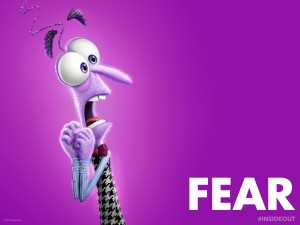 What’s more — I want sequels. Docter and Company have only scratched the surface of the possibilities that this new storytelling geography opens up for us. I want to visit other characters minds. I want to see how this paradigm allows us to consider challenges such as the formation and dissolution of prejudice; differences in people’s formations of faith; how anger leads to violence and the damage that this does in the mind of the one carrying out that violence. The vocabulary offered here is so promising in helping us recognize what ails our hearts and minds.
What’s more — I want sequels. Docter and Company have only scratched the surface of the possibilities that this new storytelling geography opens up for us. I want to visit other characters minds. I want to see how this paradigm allows us to consider challenges such as the formation and dissolution of prejudice; differences in people’s formations of faith; how anger leads to violence and the damage that this does in the mind of the one carrying out that violence. The vocabulary offered here is so promising in helping us recognize what ails our hearts and minds.
So I cannot recommend Inside Out highly enough for moviegoers of all ages. When I think about it, I find my own emotions having a shouting match: Anger rages about just how much mediocrity families must endure at the movies before they find something innovative and meaningful that all ages can enjoy. Fear frets about whether moviegoers will give this film a warm welcome, or if they’ll all just choose the familiar routines of rampaging dinosaurs and scenes of urban destruction. Sadness watches the world of mainstream movies devolve into merchandise-driven franchise-building and stories of fighting our fears with violence.
But Joy… Joy celebrates that we live in the age of Pixar, which has — time and time again — overcome the odds to deliver works of lasting, love-filled animation and imagination.
I’ll let others rush to decide how Pixar’s movies stack up now. I’m content to welcome them back, and thank them for reminding me of what is possible when artists have the freedom to follow their imaginations into undiscovered worlds… both outside and inside.
1 Comment
Comments are closed.
Any film which inspires the words “I want sequels” in today’s franchise-happy film world must be very special indeed :). Looking forward to seeing it.